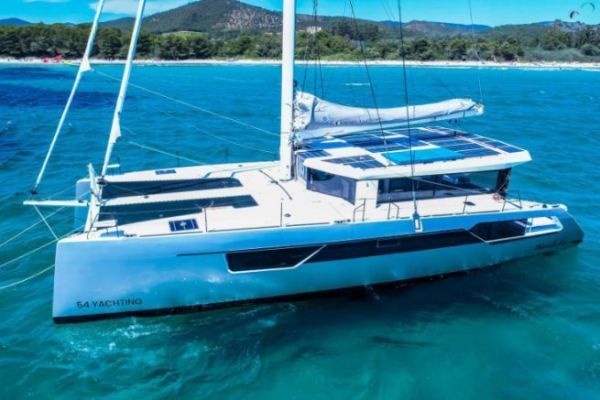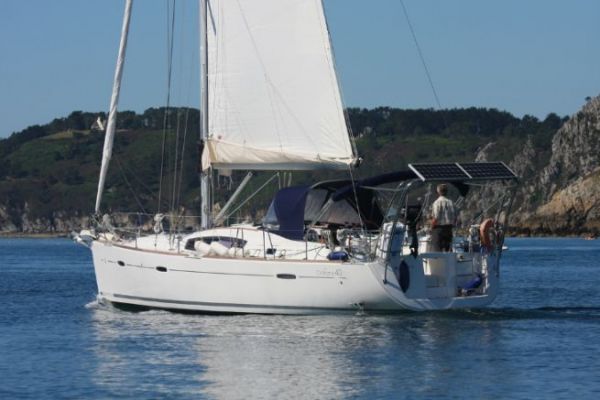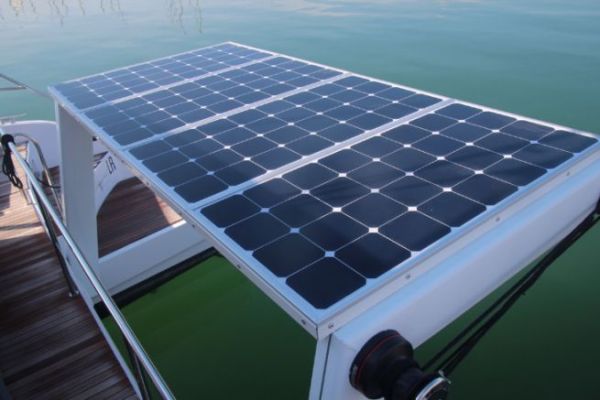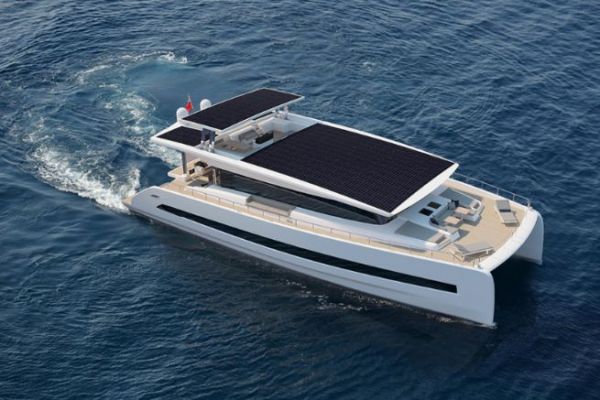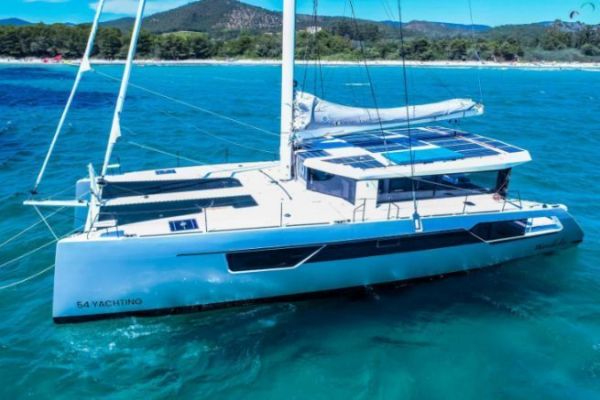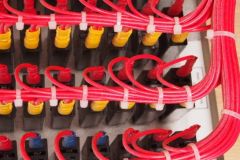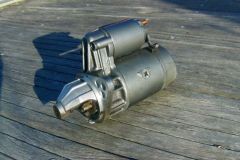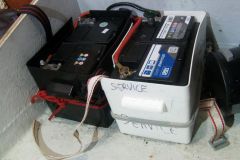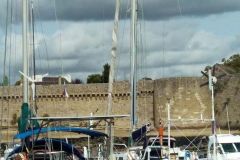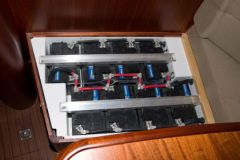The ideal location for solar panels on a boat can vary according to a number of factors.
- 1. Exposure to the sun: Solar panels should be installed in a location where they will receive maximum exposure to the sun for optimum electricity production. Be sure to choose a location that is not overly shaded by objects such as the mast, sails, or other equipment that could block sunlight.
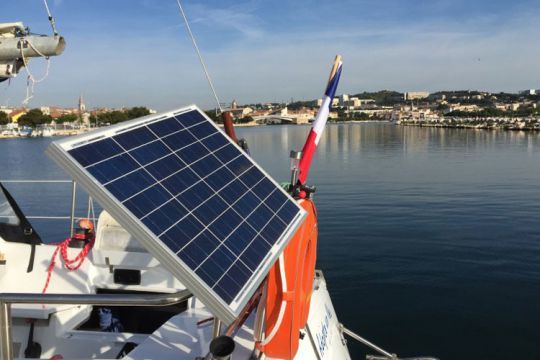
- 2. Tilt and orientation: Ideally, solar panels should be installed with a tilt and orientation that maximizes exposure to the sun. On a boat, this may mean installing the solar panels on a tilted support to follow the angle of the sun throughout the day.
-
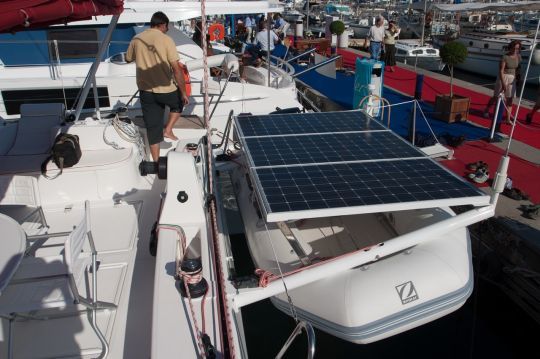
Your solar panel must receive as much sunlight as possible - 3. Available space: Take into account the size and shape of your boat to determine the space available for solar panel installation. Make sure the solar panels do not interfere with the crew's movements.
- 4. Avoid high-traffic areas: even if you've opted for flexible panels that can be walked on, this won't improve their lifespan. So choose areas that are safe from knocks and foot traffic.
- 5. Pay attention to aesthetics: Just because you're going solar doesn't mean you have to turn your boat into an industrial complex. Try to find a location that won't break the lines of your boat too much.
- 6. Weather protection: Solar panels should be installed in a way that protects them from the elements, including waves, sea spray and prolonged exposure to salt water. Make sure they are properly secured to withstand marine conditions.
Some location ideas for your solar panels
- 1. On the roof or hard-top: the roof, the wheelhouse roof or the top of the hard-top is probably the ideal location. Installed this way, the solar panels benefit from maximum sunlight, are protected from traffic and don't detract from the aesthetics.
-
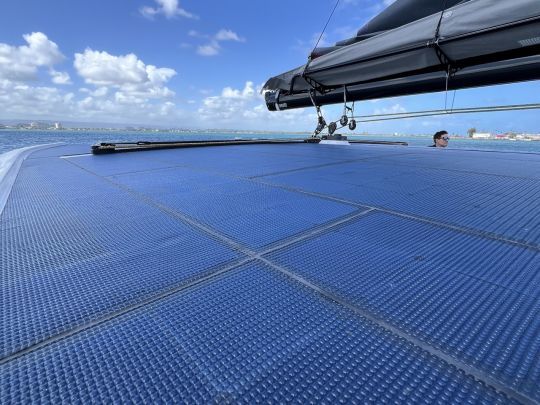
The roof is the perfect spot for solar panels - 2. On deck, in a high-traffic area: Sounds ideal, but it's not. Not only it is a high-traffic area, but in the long term it will damage the panels. If it's a sailboat, the panels will also often be in the shade of the sails. Finally, unless you have a very large unit, there isn't much room for the panels.
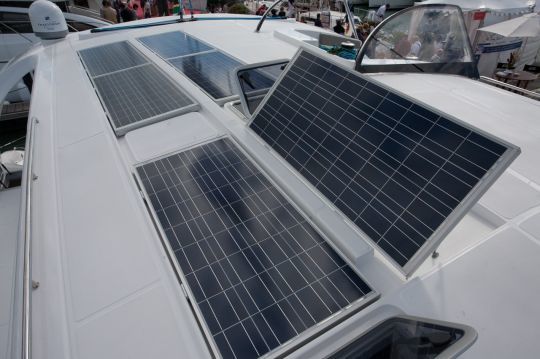
- 3. Vertically on the hulls: Unless you own a Sunreef Eco, this option is still not very feasible, as it requires photovoltaic cells integrated into the planking. However, it's an excellent location, since apart from direct exposure to the sun, the panels benefit from the reflection of light on the surface of the water.
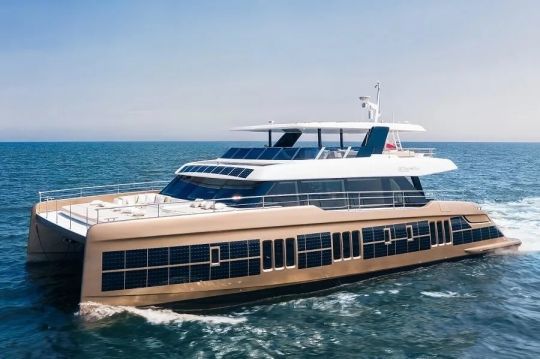
- 4. On an arch: This is the ideal solution for small boats, as it allows the panels to be installed "outside" the boat. However, this is only possible for a limited number of solar panels. Some even cover the cockpit with panels, which provides shade, but also cuts off the view...
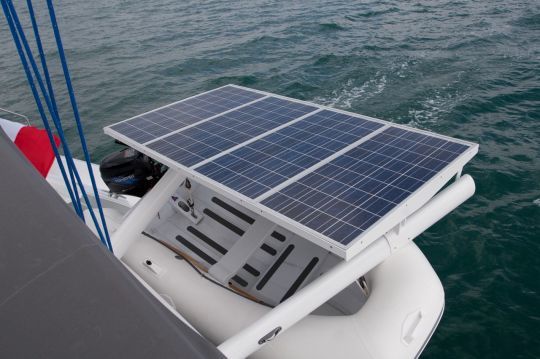
In short, the best location for solar panels on your boat is one that offers maximum exposure to the sun, adequate tilt and orientation, sufficient space, protection from the elements and a secure connection to the electrical system, and last but not least, ensures that your boat is always pleasing to the eye. In short, it all depends on your boat, the space available, the power you need and your taste.
